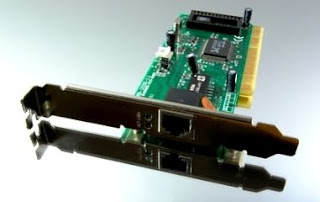How to Troubleshoot Firewall & WiFi Adapter in a Laptop
 Windows Firewall, also known as Internet connection firewall, is designed to block unauthorized access to any program or software installed on your laptop. Firewalls are often used to block hackers or spammers that may cause damage through freeware or spyware or peer-to-peer file-sharing programs. The Wi-Fi adapter or wireless network adapter connects your laptop to the Internet wirelessly. Wi-Fi adapters can be built in or can be external ones that plug into your USB port.
Windows Firewall, also known as Internet connection firewall, is designed to block unauthorized access to any program or software installed on your laptop. Firewalls are often used to block hackers or spammers that may cause damage through freeware or spyware or peer-to-peer file-sharing programs. The Wi-Fi adapter or wireless network adapter connects your laptop to the Internet wirelessly. Wi-Fi adapters can be built in or can be external ones that plug into your USB port.
Troubleshoot Windows Firewall
- Click on the Start menu and select "Control Panel."
- Double click on "Windows Firewall." (For Windows XP, double click on "Security Center.")
- Click on "Enable" to make sure your laptop is protected by a firewall. If you use Windows XP, click "On (recommended)."
- Click on the "Exceptions" tab if you wish to troubleshoot firewall issues for a specific program in Windows XP. Click on the link "Allow a Program through Windows Firewall" for Vista and Windows 7.
- Click on "Add program..." button at the bottom. Click on "Browse" to navigate your hard drive and locate the program that you wish to troubleshoot. Select the program and hit "OK."
Troubleshoot WiFi adapter
- Click on Start and select "Run..." Type "devmgmt.msc" (without the quotes) and press "Enter." This will launch "Device Manager."
- Scroll down the list of devices until you find "Network Adapters." Click on the plus sign to expand. Right click on your Wifi adapter and select "Update Driver Software..." Follow the prompts to finish installing the update.
- Right click on the WiFi adapter once again and select "Disable." Wait for a few seconds, right click and select "Enable."
- Unplug your WiFi adapter from the USB port if you are using a USB network device. (If you are using a built-in [internal] wireless adapter, ignore this step.) Wait for a few seconds and plug it back in. Sometimes, a simple restart of the USB WiFi adapter can fix problems.
 Windows Firewall, also known as Internet connection firewall, is designed to block unauthorized access to any program or software installed on your laptop. Firewalls are often used to block hackers or spammers that may cause damage through freeware or spyware or peer-to-peer file-sharing programs. The Wi-Fi adapter or wireless network adapter connects your laptop to the Internet wirelessly. Wi-Fi adapters can be built in or can be external ones that plug into your USB port.
Windows Firewall, also known as Internet connection firewall, is designed to block unauthorized access to any program or software installed on your laptop. Firewalls are often used to block hackers or spammers that may cause damage through freeware or spyware or peer-to-peer file-sharing programs. The Wi-Fi adapter or wireless network adapter connects your laptop to the Internet wirelessly. Wi-Fi adapters can be built in or can be external ones that plug into your USB port.